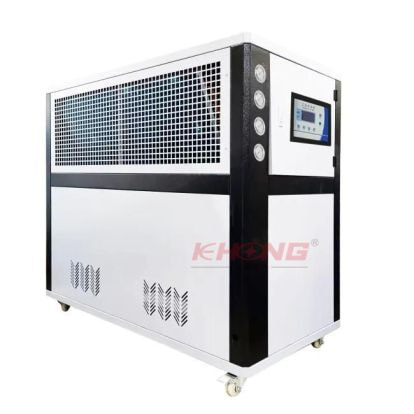What Should You Know About Industrial Refrigeration?
What is Industrial Refrigeration?
Industrial refrigeration is the technique used to cool large spaces or systems to preserve products, maintain low temperatures, and facilitate various industrial operations. This technology plays a crucial role in sectors such as food processing, chemical manufacturing, pharmaceutical production, and cold storage facilities.
How Does Industrial Refrigeration Function?
The process of industrial refrigeration functions by extracting heat from a space or substance and transferring it to another location via a refrigeration cycle. This system typically employs several sequential processes that absorb heat at a low temperature and expel it at a higher temperature.

Key Components of an Industrial Refrigeration System
An industrial refrigeration system comprises essential components such as the evaporator, compressor, condenser, and expansion valve. Each component plays an important role in the refrigeration cycle:
Evaporator: This unit absorbs heat from the refrigerated space, leading to the evaporation of the refrigerant.
Compressor: It increases the pressure and temperature of the refrigerant vapor.
Condenser: This component releases the absorbed heat to the environment, facilitating the condensation of the refrigerant back into a liquid state.
Expansion Valve: It reduces the refrigerant's pressure, allowing the substance to cool before it returns to the evaporator.
The Refrigeration Cycle Explained
The refrigeration cycle consists of four main stages:
Evaporation: The refrigerant within the evaporator absorbs heat from the cooled space, transitioning from a liquid to a vapor.
Compression: The vaporized refrigerant is compressed by the compressor, resulting in heightened pressure and temperature.
Condensation: The high-pressure, high-temperature refrigerant vapor moves to the condenser, where it releases heat and turns into a liquid.
Expansion: The liquid refrigerant passes through the expansion valve, dropping in pressure and temperature, allowing it to absorb heat again in the evaporator.
Types of Refrigerants Used in Industrial Refrigeration
Various types of refrigerants are utilized in industrial refrigeration systems, each selected for its unique properties and applications. Common refrigerants include ammonia (R717), carbon dioxide (R744), and different hydrofluorocarbons (HFCs). Ammonia is particularly popular due to its high efficiency and low cost, while carbon dioxide is preferred for its environmentally friendly characteristics.
Temperature Control in Industrial Refrigeration
Temperature regulation in industrial refrigeration systems is managed through sensors and thermostats that monitor and control temperature within a specified range. The system adjusts refrigerant flow and compressor operation to ensure consistent cooling performance.
Advantages of Industrial Refrigeration
Industrial refrigeration presents several advantages:
Preservation: It helps maintain the quality and safety of perishable goods by inhibiting spoilage and bacterial growth.
Energy Efficiency: Modern units are engineered to decrease energy usage and operational costs.
Scalability: Systems can be customized to fit a diverse range of industrial applications, from compact storage solutions to expansive processing facilities.
Reliability: Industrial refrigeration systems provide consistent cooling performance that is essential for many operations.
Common Applications of Industrial Refrigeration
Industrial refrigeration serves multiple industries for a variety of purposes:
Food and Beverage: Vital for keeping perishable items fresh and safe throughout processing, storage, and transportation.
Chemical and Pharmaceutical: Maintains stringent temperature conditions for the production and storage of sensitive materials.
HVAC Systems: Supports extensive air conditioning and climate control in commercial and industrial spaces.
Cold Storage: Facilitates long-term storage of products in low-temperature conditions.
Maintenance Requirements for Industrial Refrigeration Systems
Inspection: Regular checks for wear, leaks, and other potential issues in system components.
Cleaning: Ensuring that evaporators, condensers, and other critical parts remain clear of dirt and debris.
Lubrication: Making certain that moving parts are well-lubricated to reduce friction and wear.
Calibration: Confirming that sensors and controls accurately measure and regulate temperatures.
Is Industrial Refrigeration Eco-Friendly?
Contemporary industrial refrigeration systems are designed with an emphasis on energy efficiency and environmental consideration. Utilizing eco-friendly refrigerants, advanced control techniques, and consistent upkeep helps to lower energy use and reduce greenhouse gas emissions.
Conclusion
Industrial refrigeration is a crucial technology that supports numerous sectors by delivering reliable and efficient cooling solutions. Understanding its components, operation, and maintenance is vital for achieving optimal performance and sustainability across various industrial applications.



